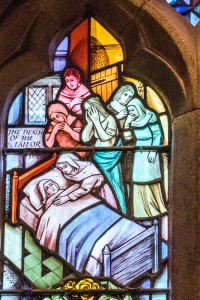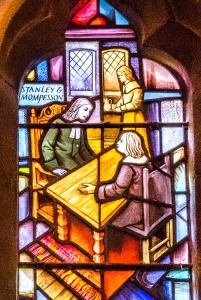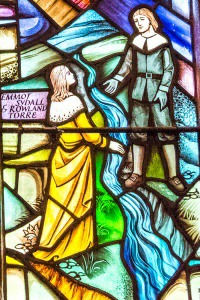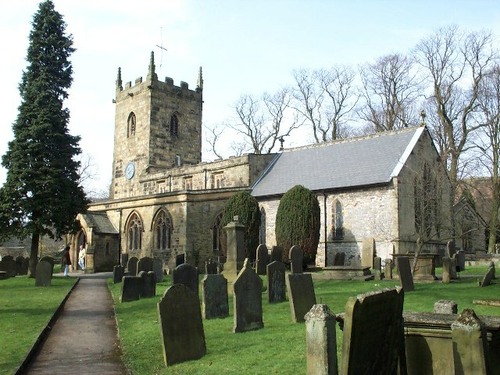The Website for St George’s Church, Waterlooville and its Parish Magazine St George’s News

Whilst on holiday recently in the Peak District of Derbyshire my wife and I visitied the village of Eyam in the Derwent Valley which is known locally as the Plague Village. It all relates back to 1665 when the Great Plague of London occurred.
That summer George Viccar, a tailor in Eyam, received delivery by pack-horse of a bale of cloth from London. It was somewhat damp on arrival so Viccar hung the cloth in front of a fire to dry it out. Unfortunately this stirred up fleas in the cloth which carried the plague virus. Viccar was bitten and on 3 September 1665 became the first plague victim in Eyam. The plague spread rapidly and by the end of the year 42 villagers had died. The death rate fell during the winter months but as the summer of 1666 approached the death rate soared again.
The vicar William Mompesson decided to act. He had only been appointed in April 1664 after the previous vicar Thomas Stanley was dismissed by the bishop for refusing to acknowledge the Act of Uniformity and use the 1662 Prayer Book. He was a Puritan and had been a supporter of Oliver Cromwell. The villagers liked him and felt he had been treated unfairly. He was still living locally on the edge of the village. Mompesson knowing he still had influence in the parish invited him to the vicarage to discuss the plague crisis. They agreed to co-operate. They announced that a cordon sanitaire would be formed around the village which no Eyam villager was to cross. Secondly all plague victims were to be buried quickly near their houses and not in the churchyard and all services were to be held in the open air. Mompesson also wrote to the Earl of Devonshire in nearby Chatsworth asking him to send food supplies which could be collected at certain points on the village boundaries. Hopefully this would prevent the plague spreading to neighbouring villages and towns but it came at a terrible cost.
1666 was a hot summer, and by August 5th or 6th villagers were dying every day. A farmer’s wife Elizabeth Hancock buried her husband and six of her children in the space of eight days. Catherine Mompesson, the Vicar’s wife died on 23rd August aged 27. As winter approached the death rate began to fall and the last victim Abraham Morten died on November 1st. In all 260 villagers, probably 1/3rd of the population had died but the quarantine had worked. Mompesson kept a detailed diary. Shattered by his wife’s death he resigned the living in 1669 and went to Eakring in Nottinghamshire never returning to Eyam.
The church (St Lawrence) is well worth a visit. A fine stained glass window commemorates the plague. The arrival of the cloth is depicted as well as the meeting of Mompesson and Stanley, whilst Mompesson is shown rising above the church. Also on display is a replica of the burial register 1665-6 giving the names and dates of death of all victims. In the churchyard is the impressive tomb of Catherine Mompesson, the only plague victim buried there.



There is also an excellent museum situated in the old Methodist Chapel. Run entirely by local volunteers it traces the spread of plague since ancient times as well as giving family details of many of the Eyam victims. Other sections relate to local industries, geology as well as fascinating information about all the Eyam men killed in the First World War. Best of all is an excellent video recreating the events of 1665-6 played by actors in authentic costume.
John Symonds

Stanley and Mompesson planning
Two lovers separated by the quarantine








